After Effects offers you a variety of options to enhance your compositions with effects. Especially beginners can benefit from the numerous pre-installed effects and the simple methods for customization. In this guide, I will show you how to use both ready-made effects and custom manual effects to achieve creative results that enhance your projects.
Key insights
- Use the predefined effects from the effects palette.
- Pay attention to the bit depth of your composition.
- Create custom effects using masks and adjustment layers.
- The combination of effects can lead to unique results.
- Effective use of keyframes opens up creative possibilities.
Step-by-Step Guide
Step 1: Creating a New Composition and Importing a Clip
Start by creating a new composition in After Effects. Choose a resolution of 1280 x 720 pixels and a frame rate that meets your needs. Set the duration of the composition to about 15 seconds. Now you can drag your desired clip into the center of the composition and scale it accordingly to ensure it displays properly.
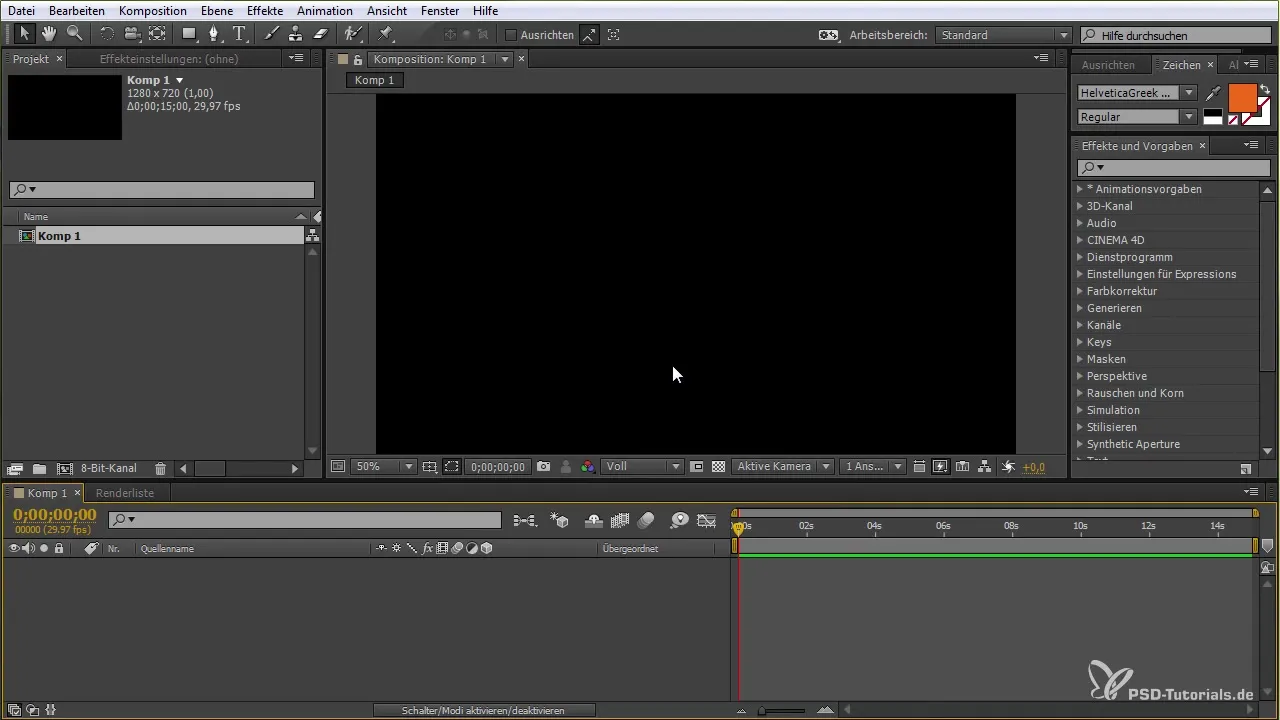
Step 2: Applying an Effect
To apply effects to your clip, open the effects palette on the right side. You have access to various categories of effects such as "Noise" and "Grain." Consider which effect you want to apply, and simply drag it onto your clip in the composition. Make sure to check which effects are suitable for the bit depth of your composition.
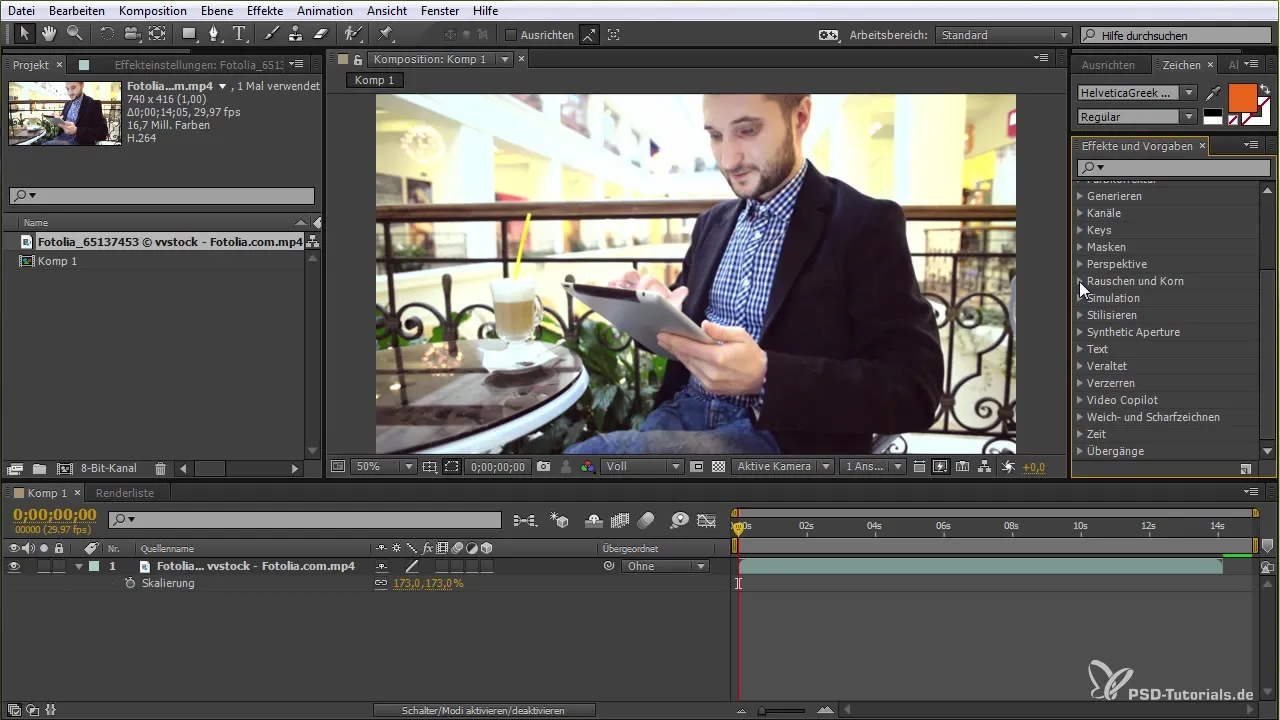
Step 3: Understanding Different Bit Depths
The bit depth (8 bit, 16 bit, 32 bit) affects the quality of your effects. 32 bit allows for greater color intensity than 16 bit or 8 bit. Therefore, you should consider which bit depth your composition requires. You can adjust the bit depth by right-clicking in the project window and selecting the appropriate option. Make sure to choose this setting before adding an effect to avoid disappointment.
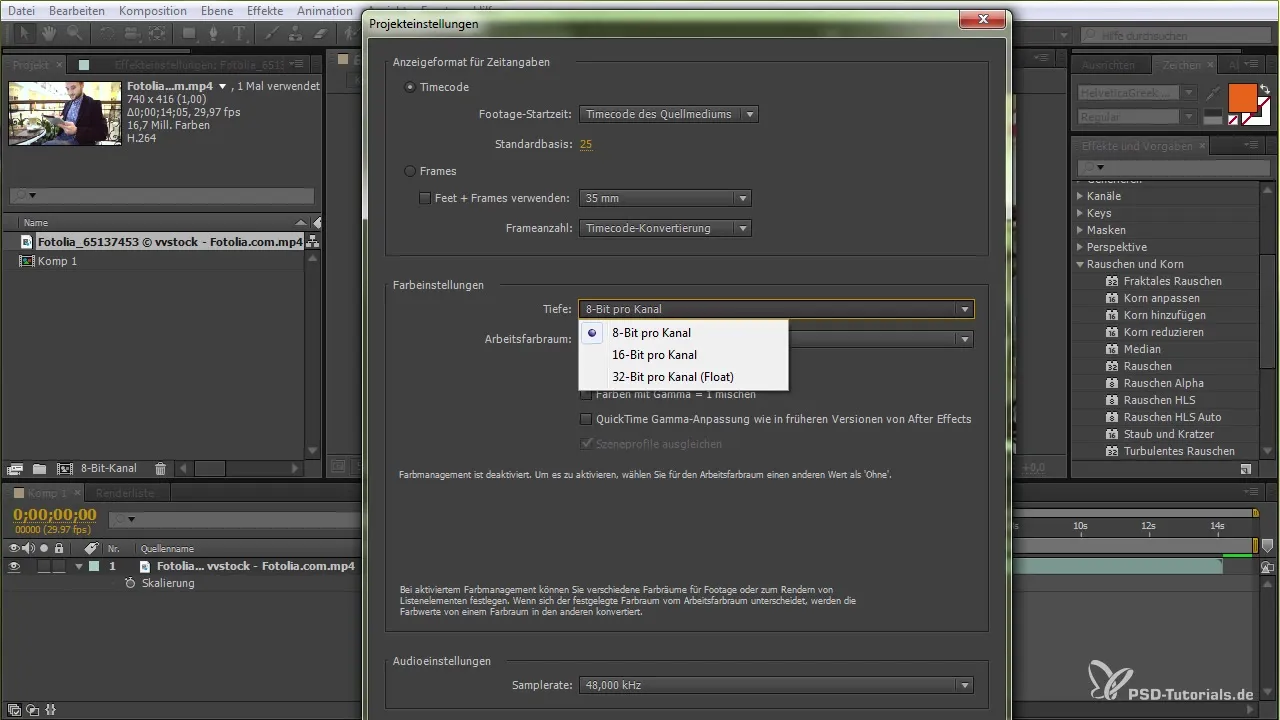
Step 4: Adjusting Effects
After applying an effect, such as "Grain," you will see a preview of it in the composition window. Here you can adjust the intensity of the effect by changing parameters such as size and softness of the grain. Once you are satisfied with the effect, you can confirm it for the final output.
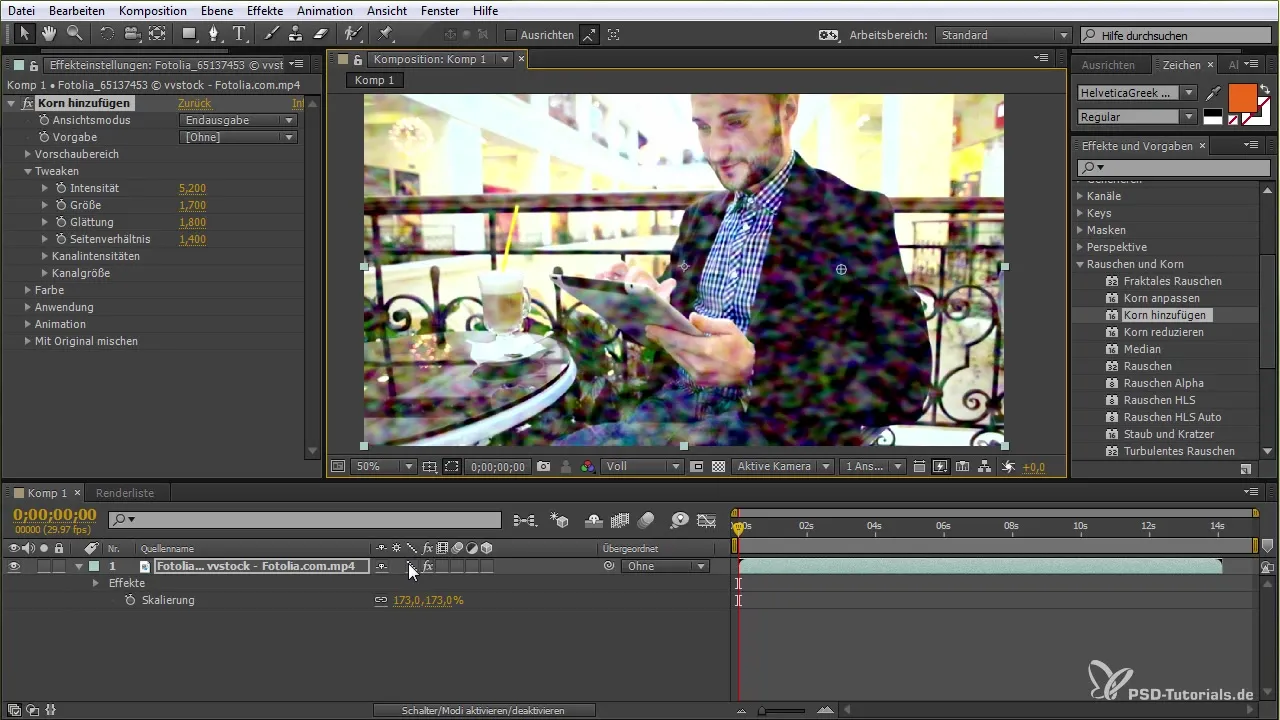
Step 5: Temporarily Enabling/Disabling an Effect
After Effects allows you to temporarily disable an effect so you can see the difference between the original version and the edited version of your clip. Simply go to the effect controls and check or uncheck the box next to the effect. This is useful for better understanding the impact of effects and optimizing decisions.
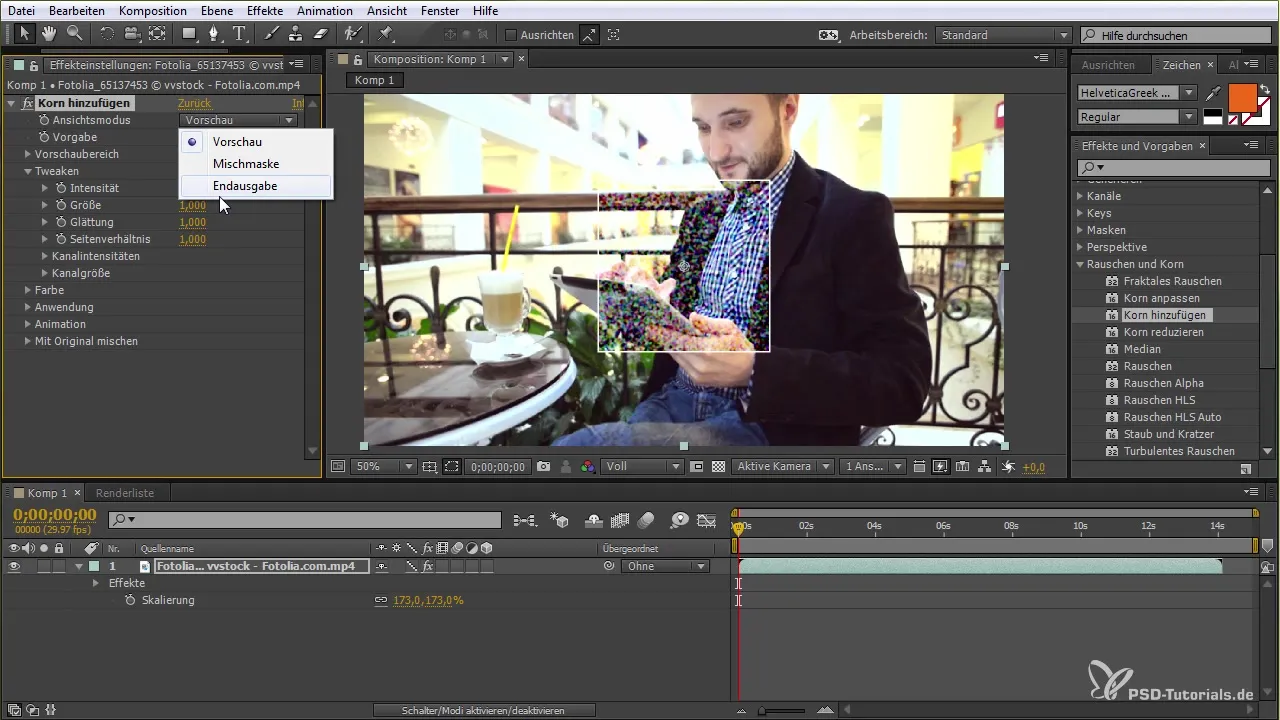
Step 6: Creating an Adjustment Layer
To apply effects to multiple layers at once, you can create an adjustment layer. Right-click and select "New" and then "Adjustment Layer." This layer acts like a filter that applies effects over all the layers below it. This makes it easier to manage effects in larger projects.
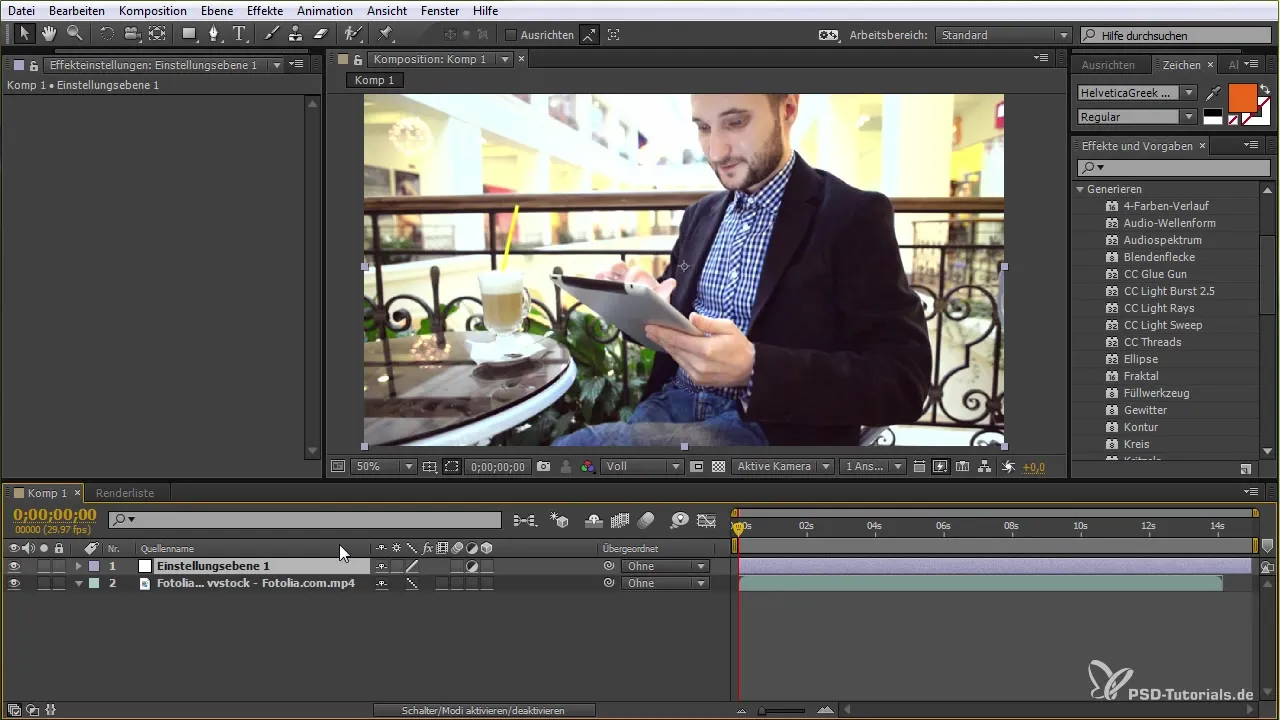
Step 7: Using Masks
A creative method when working with effects is the use of masks. You can create masks to highlight specific areas of a clip or to apply different effects only in certain areas. Use the mask tool (Rectangle tool) to create your desired shape and then adjust the properties of the mask, such as the softness of the edges.
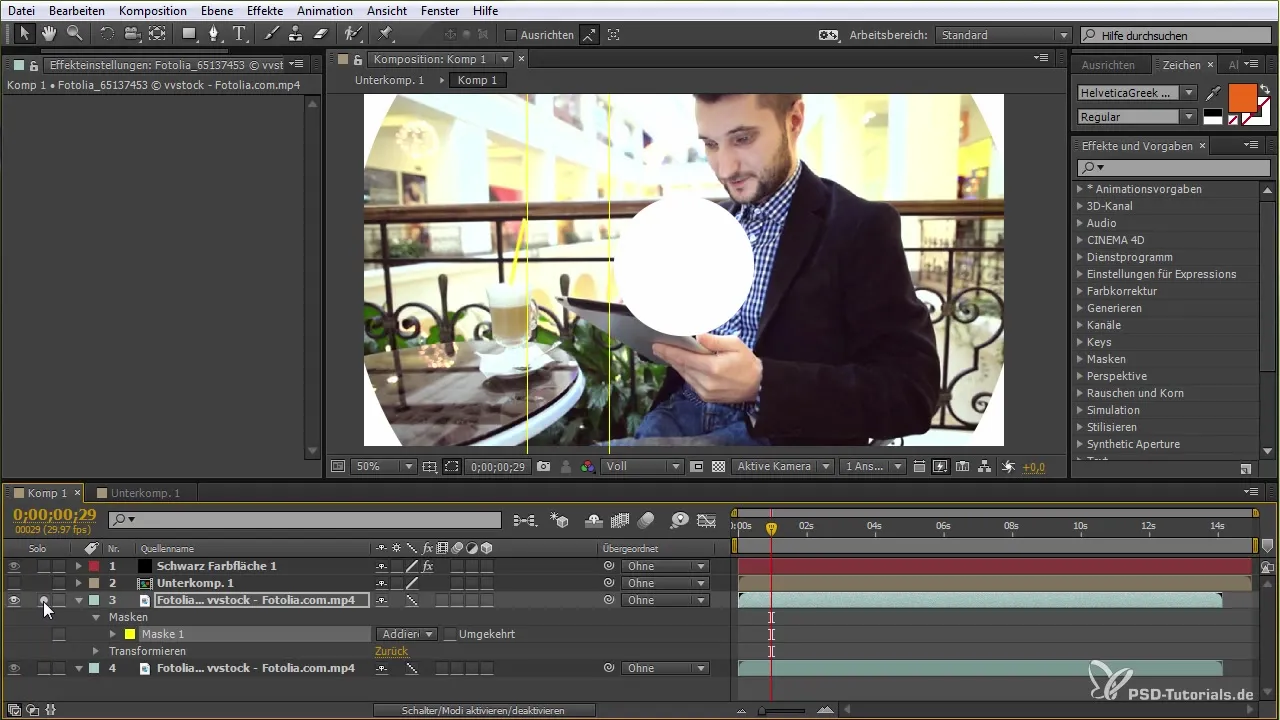
Step 8: Animating an Effect with Keyframes
If you want to change the intensity or visibility of an effect over time, you can use keyframes. Set keyframes at different points in your composition and change the parameters of the effect to create an animation. This allows for dynamic transitions and engaging animations in your compositions.
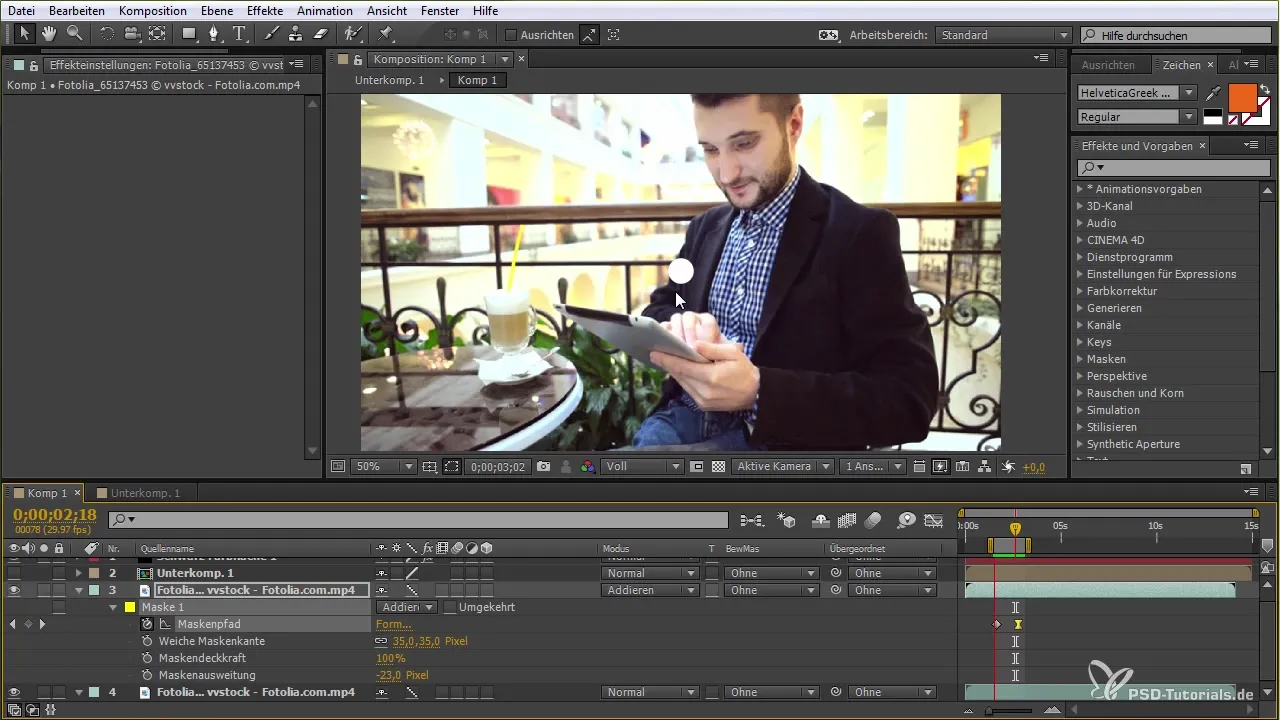
Step 9: Creating Custom Effects
Sometimes it's necessary to create your own effects to realize your vision. Experiment with color solids to create unique looks. For example, you can use a white color solid and simulate it with masks and softness. You have the freedom to play with different elements and see what works best for your project.
Step 10: Combining Effects
One of the most creative possibilities in After Effects is combining different effects to achieve unique results. Try applying several effects in succession or grouping them in an adjustment layer to achieve interesting visual niceties. Each effect has its own characteristics, and the interplay can create a completely new look.
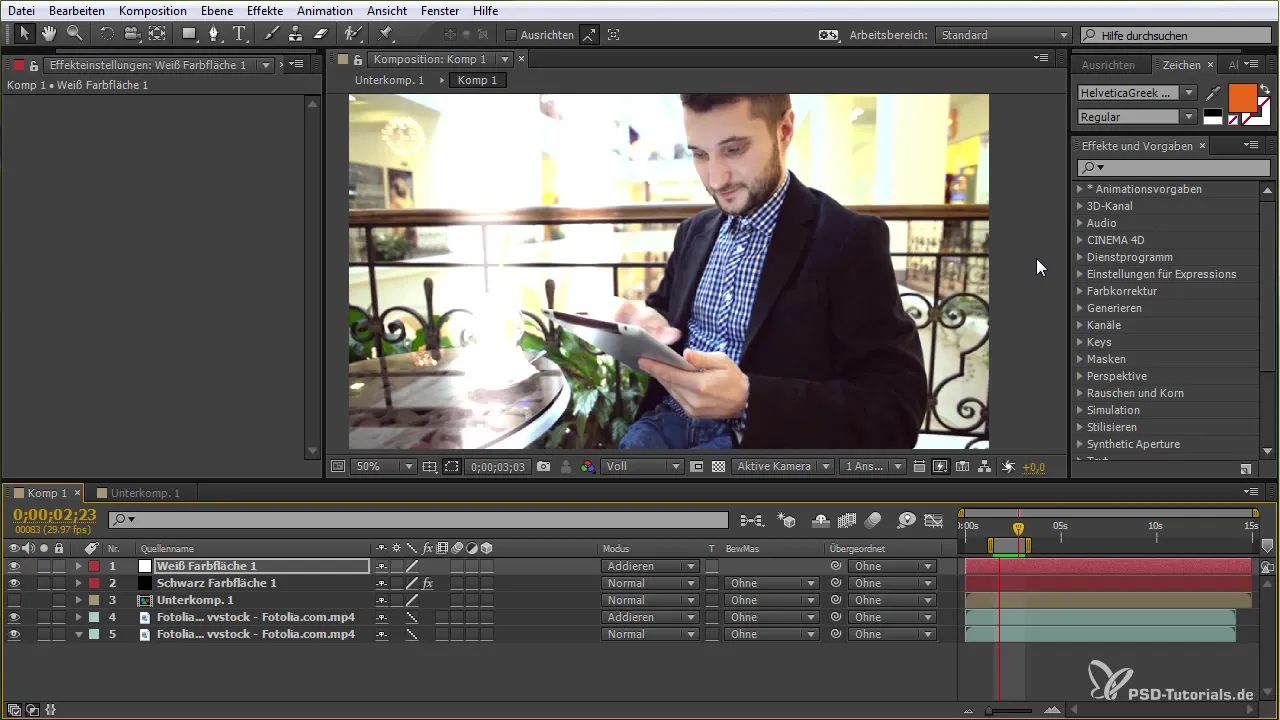
Summary – Effective Use of Effects in After Effects
In this guide, you have learned how to effectively use predefined effects as well as create and combine custom effects to enhance your projects. With these skills, you are able to create creative and engaging content in After Effects.
Frequently Asked Questions
How do I choose the right effect for my composition?You choose the right effect by browsing the effects palette and checking the effects against their application in the context of your project.
Can I apply multiple effects to one layer?Yes, you can apply multiple effects to one layer. However, make sure that the effects harmonize with each other.
What impact does the bit depth have on the application of effects?The bit depth affects the color depth and intensity of the effects; higher bit depths (e.g., 32 bit) provide more detail and better quality.
How can I undo effects?You can disable or delete effects at any time via the effect controls if you no longer want to work with them.
Can I adjust effects during animation?Yes, you can animate the parameters of effects with keyframes to achieve dynamic changes throughout your composition.


